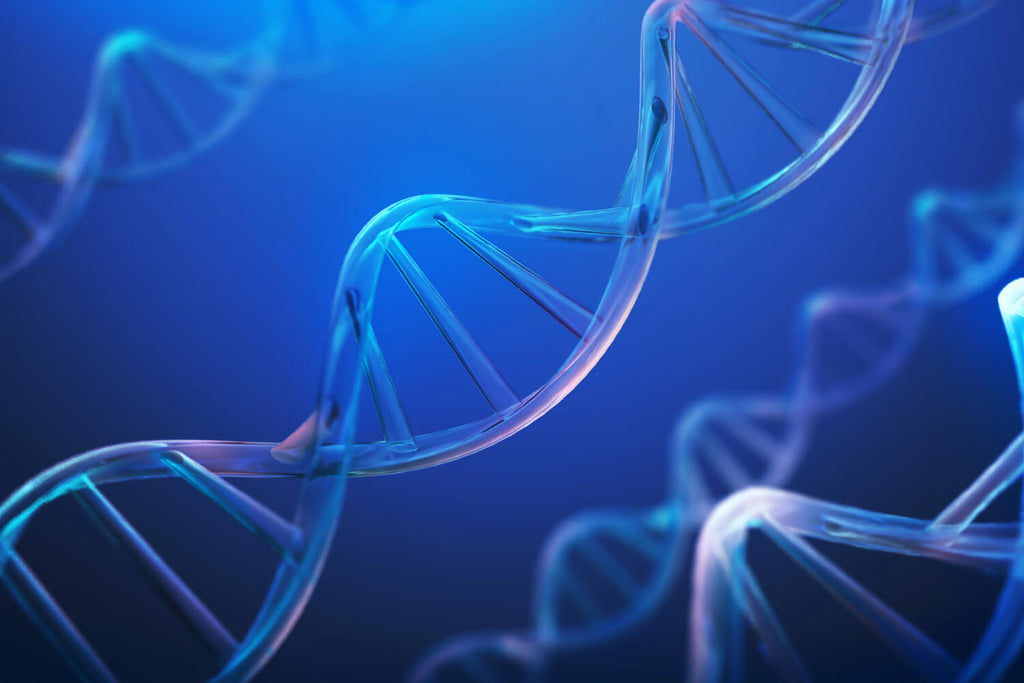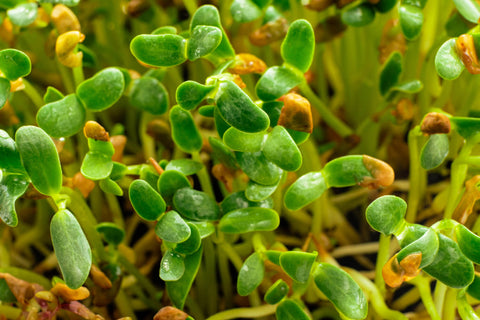Insulin-like growth factor 1 (IGF-1) is a vital hormone linked to human growth and development. It plays a crucial role during childhood development and continues to impact various bodily functions throughout adulthood, including muscle growth, bone density, and cellular repair. Understanding how IGF-1 is naturally produced provides insight into its critical roles in health and disease, highlighting the balance our bodies maintain through hormonal regulation.
At Nutronics Labs, we're dedicated to harnessing the power of nature to improve health and well-being. But how is IGF-1 naturally produced, and why is it so important for your health? Let's explore the natural production process of IGF-1 and how our popular IGF-1 supplements can help you feel and perform better in the gym.
What Is Insulin-like Growth Factor (IGF-1)?
IGF-1 is a hormone similar in molecular structure to insulin. It plays a vital role in childhood growth and continues to have various effects on the body into adulthood. IGF-1 is part of a complex system that cells use to communicate with their physiological environment. This complex system, involving growth hormone (GH) and IGF-1, is crucial for the body's development and function.
Insulin-like Growth Factors
Insulin-like growth factors (IGFs) are a group of peptides that play significant roles in growth, development, and the regulation of physiological processes. They get their name because of their structural similarity to insulin and their ability to promote insulin-like activity, such as glucose metabolism. However, their primary functions are related to growth and development.
The two main types of insulin-like growth factors are IGF-1 and IGF-2, and they differ in their distribution, regulation, functions, and the stages of life at which they are most active.
IGF-1 (Insulin-like Growth Factor 1)
- Source and Regulation: IGF-1 is primarily produced in the liver as a response to growth hormone (GH) stimulation. Its production can be influenced by nutritional status, hormonal milieu, and overall health.
- Function: IGF-1 is crucial for normal childhood growth and development, playing a key role in muscle growth. In adults, it continues to impact the maintenance and repair of tissues, particularly muscle and bone. IGF-1 promotes cell growth and division and manages metabolism by regulating insulin sensitivity and contributing to anabolic processes.
- Circulation and Action: While IGF-1 circulates in the bloodstream and binds to the IGF-1 receptor (IGF1R) on target cells and the insulin receptor, mediating its effects.
IGF-2 (Insulin-like Growth Factor 2)
- Source and Regulation: IGF-2 production occurs in various tissues, not just the liver. Its expression is significant during fetal development and is partly regulated by the IGF2 gene.
- Function: IGF-2 is particularly important for fetal growth and development, influencing the growth of almost all tissues, especially the brain, liver, and kidney. Its role in adults is less understood but is thought to be involved in maintaining tissue homeostasis and functions related to cellular differentiation and development.
- Circulation and Action: Like IGF-1, IGF-2 acts through the IGF-1 receptor (IGF1R) to exert its effects. However, it also interacts with the insulin receptor and the IGF-2 receptor (IGF2R), which plays a role in IGF-2 degradation rather than signal transduction.
Key Differences between IGF-1 and IGF-2
- Stage of Life: IGF-1 is most active during childhood and adolescence, promoting growth and development, while IGF-2 plays a crucial role during fetal development.
- Regulation: IGF-1 levels are primarily regulated by human growth hormone, whereas IGF-2 levels are influenced by genomic imprinting and are more constant, not significantly affected by GH.
- Function and Effects: IGF-1 has a more pronounced effect on muscle and bone growth postnatally, while IGF-2's significant impact is prenatal, affecting the development of various organs and tissues.
Both IGF-1 and IGF-2 are essential for normal human growth and development, with their effects being complementary but distinct in their regulation, primary functions, and the stages of life at which they are most active.
The Natural Production of IGF-1
The journey of IGF-1 starts in the liver and is triggered by the release of growth hormone (GH) from the pituitary gland. Here's a simplified breakdown of the process:
Growth Hormone Release
The process begins in the pituitary gland, a small but mighty structure found at the base of the brain. This gland is a master regulator of various hormones, including growth hormone. The release of GH is not constant but occurs in pulses, with the highest levels typically observed during deep sleep or in response to physical exercise. This pulsatile release pattern is crucial for its effectiveness and is influenced by various factors, including stress, nutrition, and other hormonal signals.
Liver Stimulation
Once released, GH travels through the bloodstream to reach its target organs, with the liver being the primary site for the next action stage. The liver's role in the body is multifaceted, extending far beyond its well-known function in detoxification. Upon receiving GH, liver cells or hepatocytes activate a cascade of genetic and molecular events leading to the production of IGF-1. This finely tuned process ensures that the amount of IGF-1 produced matches the body's needs, highlighting the liver's critical role in maintaining physiological balance.
IGF-1 Release
Once produced, IGF-1 is released into the bloodstream, acting as a messenger to deliver the growth-promoting signals of GH to the rest of the body. Its actions are wide-reaching, affecting almost every cell type, stimulating growth, and promoting the synthesis of proteins, which are crucial for cell growth and repair. IGF-1 also plays a key role in regulating cell death, ensuring the removal of cells that are no longer needed or are damaged beyond repair.
Apart from the liver, which is the primary site of IGF-1 production, other tissues and organs in the body also produce IGF-1 locally. This locally produced IGF-1 plays an important role in the autocrine and paracrine regulation of cell growth and development.
Beyond the Liver: Localized Production of IGF-1
While the liver is the primary production site of circulating IGF-1, it's not the whole story. Many tissues and organs, including muscle, bone, and brain, can produce IGF-1 locally. This local production does not significantly contribute to the levels of IGF-1 in the bloodstream but plays a pivotal role in regulating cell growth and development. This means that IGF-1 can exert its effects directly where it is produced, providing a finely tuned mechanism for regulating tissue growth and repair.
For instance, IGF-1 is crucial for muscle growth and repair in muscle tissue, acting directly at the site of damage to stimulate the proliferation and differentiation of satellite cells into new muscle fibers. In the brain, locally produced IGF-1 supports neuronal growth, survival, and differentiation, highlighting its role in cognitive function and neuroprotection.
The Importance of IGF-1
IGF-1's role in the body is multifaceted. It promotes the growth and proliferation of cells, influences the aging process, and helps regulate muscle growth and repair. Here are some of the key benefits:
- Growth and Development: IGF-1 is crucial for childhood growth, promoting the development of bones and tissues. But it remains essential throughout adulthood.
- Muscle Repair and Regeneration: It aids in muscle growth and repair, making it particularly important for athletes and those engaged in regular physical activity. This is where our IGF-1 sprays and supplements come in.
- Bone Density: IGF-1 supports bone density, helping to prevent age-related bone loss.
- Metabolic Regulation: It regulates metabolism, impacting the body's ability to use sugar and fat for energy. This process also helps athletes and strength trainers build strength and lean muscle mass.
Enjoy Natural Wellness with Nutronics Labs
IGF-1 is crucial to our body's growth, development, and overall health. By understanding how it is naturally produced and its benefits, we can better appreciate the importance of supporting our bodies in a natural and healthy way.
At Nutronics Labs, we believe in the power of natural ingredients to support the body's innate processes. Our IGF-1 and deer antler velvet products are designed to complement your body's natural production of hormones like IGF-1, providing support for growth, development, and overall well-being. By focusing on purity and efficacy, we aim to bring the benefits of nature directly to you, backed by science and research.

 Proudly Veteran Owned & Operated
Proudly Veteran Owned & Operated








